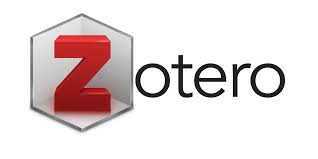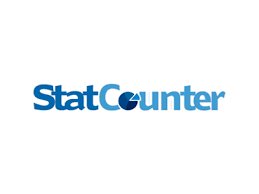Analysis of Students Problem-Solving Ability in Solving Improper Integral Problems
DOI:
https://doi.org/10.29240/ja.v5i2.6837Keywords:
Problem-solving, Polya stages, Improper integral problemAbstract
This study aimed to determine the student’s problem-solving-ability using Polya stages in solving Improper Integral questions in online Integral Calculus Learning through zoom applying Student-Centered Learning. It is very rare to find the research that examines students' problem-solving abilities in solving improper integral problems. The research method used in this study was ex-post facto research. The research subjects were 14 students from class B in the third semester of the Mathematics Study Program FKIP UNIB 2020/2021 getting grades A and A- in Integral Calculus Learning. The analysis in Polya stages consisted of Understanding the Problem (P1); Devising a Plan (P2); Carrying out the Plan (P3); and Looking Back (P4. The instruments used to collect data were improper integral test sheets, analysis guide sheets, and open questionnaires. The result showed the mean score of the student’s problem-solving ability was 74.02. The mean value in each stage: P1 = 79.91; P2 = 79.46; P3 = 72.77; and P4 = 65.18. It was concluded that students already had good abilities in understanding problems and planning solutions.
Downloads
References
Antika, R. R. (2014). Proses Pembelajaran Berbasis Student Centered Learning (Studi Deskriptif di Sekolah Menengah Pertama Islam Baitul ‘Izzah, Nganjuk). Jurnal biokultur, 3(1), 251-265. Retrieved from https://journal.unair.ac.id/
Arfi, E., & Wiryanto, L. H. (2018). Abuse notation of improper integrals. IOP Conference Series: Materials Science and Engineering, 296(1), 1-6. https://doi.org/10.1088/1757-899X/296/1/012056
Davis, B., & Summers, M. (2015). Applying Dale’s Cone of Experience to Increase Learning and Retention: A study of student learning in a foundational leadership course. QScience Proceedings, 2015(4), 6. https://doi.org/10.5339/qproc.2015.wcee2014.6
Dharmayana, I. W., Kumara, A., & Wirawan, Y. G. (2012). Keterlibatan Siswa (Student Engagement) sebagai Mediator Kompetensi Emosi dan Prestasi Akademik. Jurnal Psikologi, 39(1), 76-94. https://doi.org/10.22146/jpsi.6968
Diana, B. (2021). The Cone of Experience in Teaching Mathematics Synchronously and Asynchronously. InterConf, 218–226. https://doi.org/10.51582/interconf.19-20.02.2021.092
Dwianjani, N. K. V., Candiasa, I. M., & Sariyasa. (2018). Identifikasi Faktor-faktor yang Mempengaruhi Kemampuan Pemecahan Masalah Matematika. Numerical: Jurnal Matematika dan Pendidikan Matematika, 2(2), 153-166. https://doi.org/10.25217/
numerical.v2i2.276
Ersoy, E. (2016). Problem-Solving and Its Teaching in Mathematics. The Online Journal of New Horizons in Education, 6(2), 79–87. Retrieved from www.tojned.net
Hartono, W., & Subali Noto, M. (2017). Pengembangan Modul Berbasis Penemuan Terbimbing untuk Meningkatkan Kemampuan Matematis pada Perkuliahan Kalkulus Integral. Jurnal Nasional Pendidikan Matematika), 1(2), 320–333. http://doi.org/10.33603/
jnpm.v1i2.616
Khoiriyah, S. (2016). Kemampuan Komunikasi Matematis Mahasiswa dalam Pemecahan Masalah Kalkulus II. E-DuMath, 2(2), 202–2019. Retrieved from http://ejournal.stkipmpringsewu-lpg.ac.id/index.php/edumath
Koko, M. (1999). Kalkulus. Jakarta: Erlangga.
Oinam, S. (2017). Student-centered approach to teaching and learning in higher education for quality enhancement. IOSR Journal of Humanities and Social Science, 22(6), 27–30. https://doi.org/10.9790/0837-2206132730
Parma, & Saparwadi, L. (2015). Pengembangan Model Pembelajaran Kalkulus Berbantuan Komputer Melalui Program Maple di Program Studi Pendidikan Matematika. Jurnal Elemen, 1(1), 37–48. https://doi.org/10.29408/jel.v1i1.80
Pateşan, M., Balagiu, A., & Zechia, D. (2016). The Benefits of Cooperative Learning. International Conference Knowledge-Based Organization, 22(2), 478–483. https://doi.org/10.1515/kbo-2016-0082
Polya. (1988). How to solve it, a new aspect of mathematical method. Princeton: Princeton University Press.
Sugiyono. (2012). Metode Penelitian Kuantitatif, Kualitatif, dan R & D. Bandung: Alfabeta.
Suryadi, D. (2010). Menciptakan Proses Belajar Aktif: Kajian dari Sudut Pandang Teori Belajar dan Didaktik. Makalah Seminar Nasional Pendidikan Matematika UNP. Retrieved from https://adoc.pub/menciptakan-proses-belajar-aktif-kajian-dari-sudut-pandang-t.html
Syafa’atun, & Nurlaela. (2022). Analisis Pemahaman Konsep dan Kemampuan Pemecahan Masalah Matematika pada Mata Kuliah Kalkulus Dasar. Jurnal Ilmiah Wahana Pendidikan, 8(19), 430–436. https://doi.org/10.5281/zenodo.7180813
Varberg, Purcell, & Rigdon. (2007). Calculus 9th Edition Pearson. New York: Pearson.
Yuan, S. (2013). Incorporating Pólya’s Problem-Solving Method in Remedial Math. Journal of Humanistic Mathematics, 3(1), 96–107. https://doi.org/10.5642/jhummath.201301.08
Downloads
Published
Issue
Section
Citation Check
License
Copyright (c) 2023 Hanifah Hanifah, Ahbi Mahdianing Rum

This work is licensed under a Creative Commons Attribution-NonCommercial-ShareAlike 4.0 International License.
Authors who publish with ARITHMETIC: Academic Journal of Math agree to the following terms:
- Authors retain copyright and grant the journal right of first publication with the work simultaneously licensed under a Creative Commons Attribution-NonCommercial-ShareAlike 4.0 International License (CC BY-NC-SA 4.0) that allows others to share the work with an acknowledgment of the work's authorship and initial publication in this journal.
- Authors are able to enter into separate, additional contractual arrangements for the non-exclusive distribution of the journal's published version of the work (e.g., post it to an institutional repository or publish it in a book), with an acknowledgment of its initial publication in this journal.
- Authors are permitted and encouraged to post their work online (e.g., in institutional repositories or on their website) prior to and during the submission process, as it can lead to productive exchanges, as well as earlier and greater citation of published work (See The Effect of Open Access).







